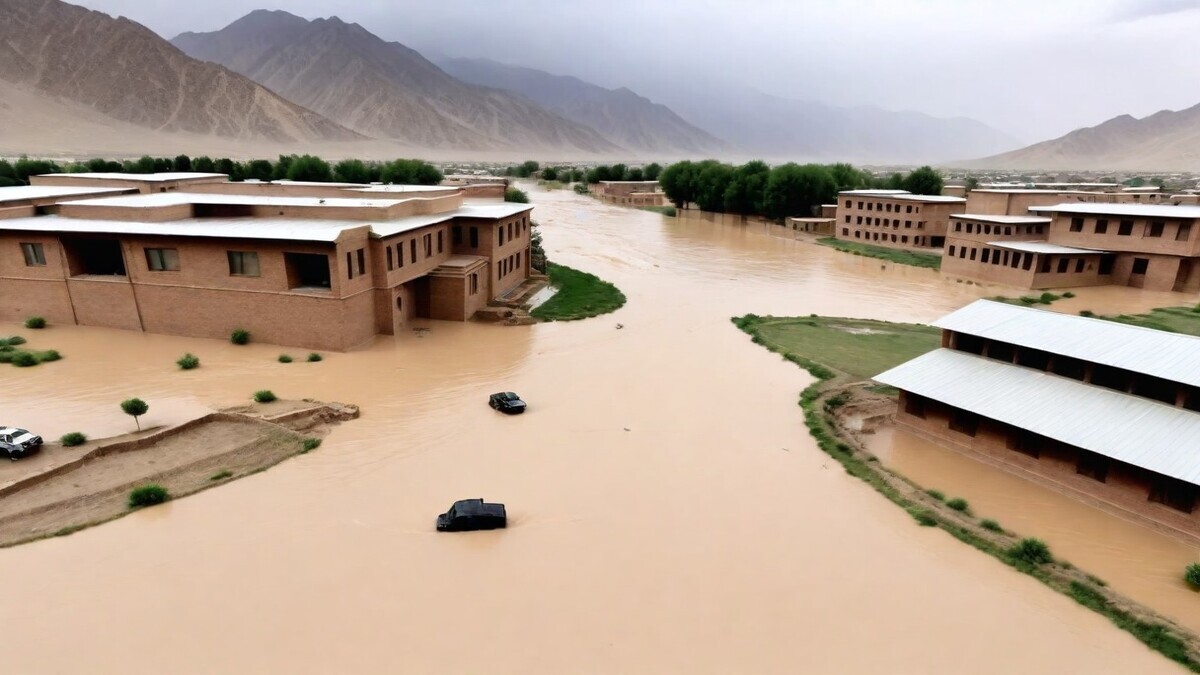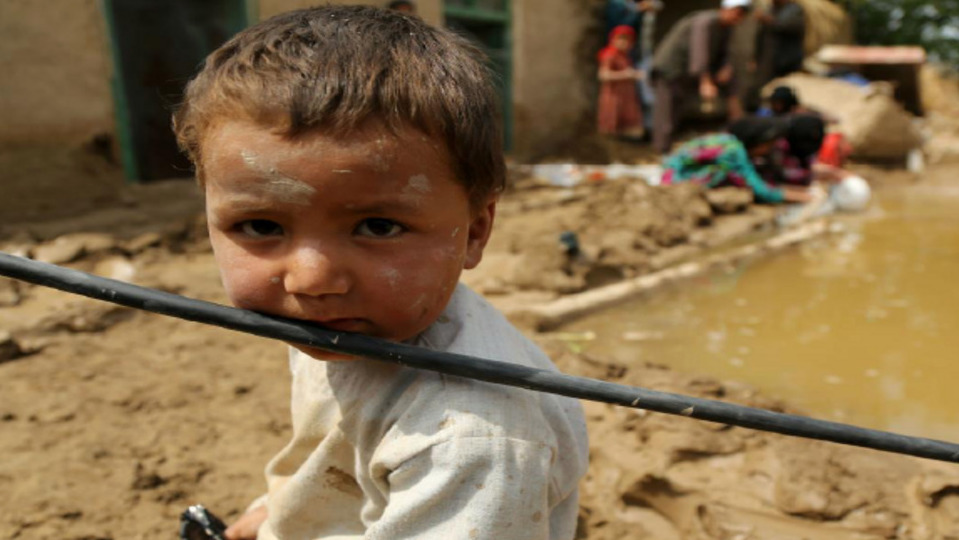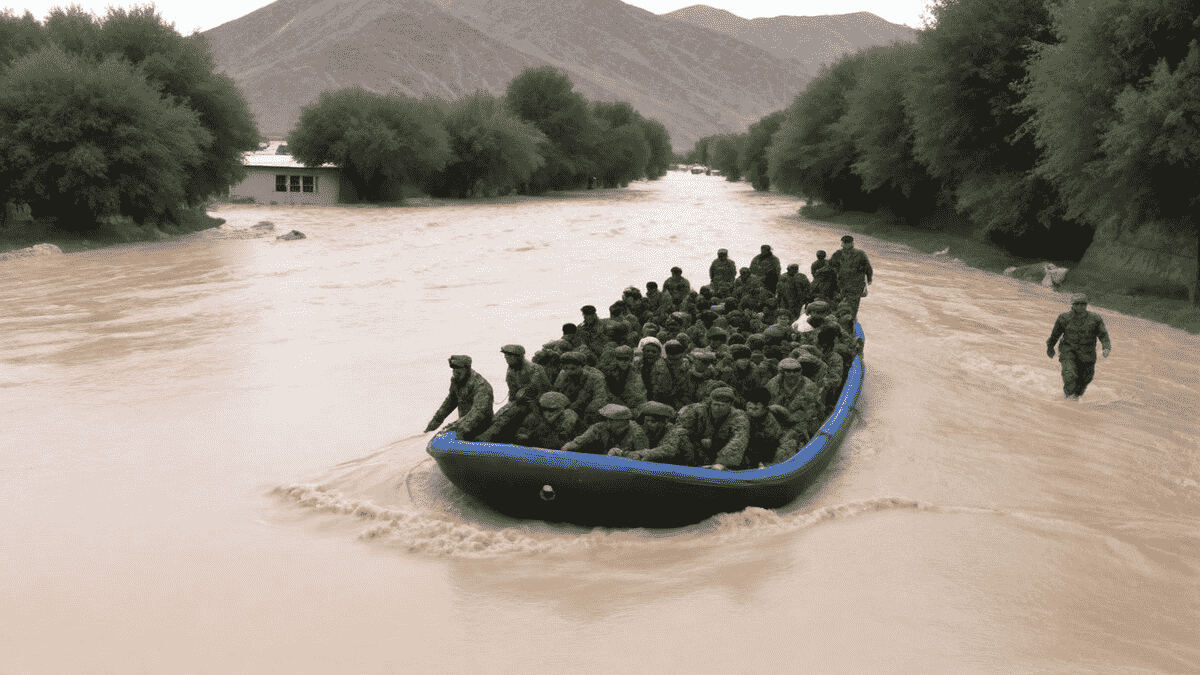Afghanistan, a country already grappling with immense hardship, has been struck by a new wave of devastation: flash floods. Heavy rains lashing the region for several days have caused rivers to overflow and triggered mudslides, wreaking havoc on infrastructure, livelihoods, and lives. This article delves into the details of the Afghan floods, exploring the affected areas, historical comparisons, the tragic loss of life and property, and predictions for future developments.

Flash Floods In Afghanistan: Affected Areas
The recent flash floods have impacted a significant portion of Afghanistan. While the full extent of the damage is still being assessed, reports indicate that several provinces have borne the brunt of the disaster. These include:
Kabul: The capital city hasn’t been spared, with overflowing rivers causing damage to homes and businesses.
Western Afghanistan: Provinces like Farah and Herat have suffered significant losses in infrastructure and agricultural land.
Southern Afghanistan: Zabul and Kandahar provinces have also witnessed flash floods, leading to displacement and property damage.
A Glimpse into the Past: A History of Floods
Afghanistan is no stranger to natural disasters, with floods being a recurring challenge. Here’s a brief historical perspective:
2022: Heavy rains and subsequent floods in March 2022 claimed lives and destroyed property across several provinces.
2018: Flash floods in northern Afghanistan displaced thousands and caused widespread damage.
Early 1900s: Historical records reveal devastating floods that reshaped the landscape and caused immense hardship.
Loss of Life and Property: A Grim Reality
The recent floods have resulted in a tragic loss of life. According to reports from the Taliban-controlled State Ministry for Natural Disaster Management, at least 33 people have been killed, with many injured. The true figures might be higher as communication remains a challenge in some remote areas.
The damage to property is extensive. Over 600 homes have been either partially or completely destroyed, leaving families displaced and vulnerable. Infrastructure like roads and bridges has also been severely affected, hindering rescue and relief efforts.
Comparisons and Concerns: Highlighting the Severity
For a better understanding of the current crisis, it’s important to compare it to past events:
Scale: While the official death toll from the recent floods is lower than some previous incidents, the widespread nature of the damage paints a concerning picture.
Infrastructure: The destruction of roads and bridges significantly impedes relief efforts compared to past floods.
Economic Impact: Occurring in a war-torn nation already facing an economic crisis, the floods could have a devastating long-term impact.
Predictions and the Road Ahead: A Look Towards Relief
Predicting the future course of the floods presents a significant challenge. While weather forecasts indicate the likelihood of additional rainfall, which could exacerbate the ongoing situation, the exact path and intensity of these floods remain uncertain.
In response to the escalating crisis, it’s anticipated that the international community will step in to provide vital assistance for relief efforts. However, the effectiveness of this aid may be hindered by the constrained flow of resources, primarily due to the complex political dynamics in Afghanistan.
The combination of unpredictable weather patterns and logistical challenges underscores the urgency for coordinated and sustained support from both local and global stakeholders to mitigate the impact of the floods and alleviate the suffering of affected communities.
Here’s what we can expect in the coming weeks:
Rescue and relief operations: National and international organizations will work to locate survivors, provide medical aid, and distribute essentials.
Damage assessment: The full extent of the damage to infrastructure and agricultural land will be assessed.
Reconstruction efforts: Rebuilding homes and vital infrastructure will be a long-term project.
A Call for Support
The recent floods in Afghanistan serve as a stark reminder of the nation’s susceptibility to natural disasters. With its infrastructure weakened and resources limited, Afghanistan is in dire need of international assistance. Here are a few prominent international websites that are likely to be involved in relief and rescue efforts to aid Afghanistan during this crisis:
The United Nations Office for the Coordination of Humanitarian Affairs (OCHA): This organization, found at https://www.unocha.org/, plays a central role in coordinating the global humanitarian response to emergencies. It offers real-time updates on Afghanistan’s situation and helps in mobilizing resources and personnel.
The International Committee of the Red Cross (ICRC): Operating at https://www.icrc.org/en, the ICRC is a neutral and independent humanitarian group with a long history of involvement in Afghanistan. They focus on providing medical assistance, emergency aid, and safeguarding civilians during conflicts and disasters.
The World Food Programme (WFP): Found at https://www.wfp.org/, this UN agency is pivotal in addressing food insecurity, particularly during crises. They are expected to offer emergency food aid to those displaced and affected by the floods in Afghanistan.
Doctors Without Borders (MSF): Operating at https://www.doctorswithoutborders.org/, MSF is renowned for delivering medical care in conflict zones and regions with limited access to healthcare. They are likely to dispatch medical teams to aid flood victims and provide vital healthcare services in affected areas.
Understanding the Afghan Floods
- What caused the floods?
The floods were triggered by heavy rainfall over several days that caused rivers to overflow and led to mudslides.
- Which areas are most affected?
Kabul, western provinces like Farah and Herat, and southern provinces like Zabul and Kandahar have been severely impacted.
- How many casualties have been reported?
At least 33 people have been killed, with many more injured.
- What kind of damage has occurred?
Homes, businesses, infrastructure, and agricultural land have been severely damaged or destroyed.
- How are relief efforts progressing?
Rescue and relief operations are underway, but communication challenges and limited resources pose obstacles.
- What is the role of the international community?
International aid organizations and financial assistance are crucial for comprehensive relief and rebuilding efforts
- Are there any historical trends in flood frequency or severity in Afghanistan?
While there isn’t definitive data on long-term trends, anecdotal evidence suggests an increase in flood frequency and intensity in recent decades. Experts attribute this to factors like climate change and deforestation in mountainous regions.
- How has the ongoing political situation in Afghanistan impacted the response to the floods?
The Taliban’s control over the country presents challenges for international aid organizations in terms of access and communication. This could potentially slow down relief efforts and hinder the flow of resources.
- What are some long-term consequences of the floods for Afghanistan?
Beyond the immediate loss of life and property, the floods could have a lasting impact on the Afghan economy. Damage to agricultural land could lead to food insecurity, while destroyed infrastructure could hinder trade and development.
- How can individuals help with the relief efforts in Afghanistan?
While directly aiding relief teams on the ground might be difficult, there are ways to contribute. Individuals can donate to established humanitarian organizations working in Afghanistan, raise awareness about the crisis, or participate in fundraising campaigns.






